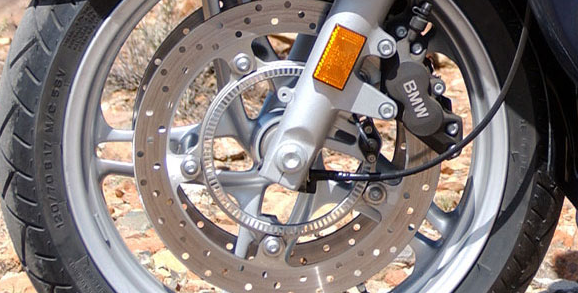While driving a vehicle, the primary concern is the safety of the passengers. The safety depends on the reflex and the driving habits of the driver. But sometimes, the physical environment causes some threats like skidding, under steer, over steer etc. This problem is eliminated by the use of automobile safety systems like Anti-locking braking system or ABS, Electronic brake force distributor, traction control systems and electronic stability program (ESP).
Let us consider a vehicle driven on a slippery ice track. When the driver applies brakes, the wheels tend to skid due to low frictional co-efficient between the wheels and the road. In such a situation, an experienced driver applies the brakes as a pulse i.e. applying and releasing the brake pedal alternatively. This is done with great care so that the vehicle does not skid or slip.
what is anti lock braking system (ABS)
The skidding of the vehicle occurs when one or more wheels are decelerated more rapidly than the other wheels. This may be because of locking of the wheels or improper braking. To eliminate this, the Anti-locking braking system is used.

Image Source: Wiki
what does anti lock brakes do?
It is used to maintain tractive contact with the road surface during braking. It operates on the same principle of pulsating braking as done by the driver. The rate of pulsating is precise and very short like 15 times per second.
It consists of speed sensors attached to each wheel, which detect any wheel rotating slower than the others and it actuates the valves to reduce the hydraulic pressure of the brakes acting on that wheel. Thus the locking of brakes is prevented. Similarly if any one of the wheels are rotating at a greater speed, the hydraulic valves are regulated such that the pressure on the wheel increases and the wheel is decelerated.
Advantages of ABS
Thus all the wheels obtain uniform deceleration, leading to better control and prevention of slip. The latest technologies in ABS use individual braking system for each wheel.
What is Electronic stability program (ESP)
ESP or Electronic Stability Control (ESC) brake is an advanced system that detects the loss of steering control and prevents under-steer and over steer by applying brakes individually to the wheel. It consist of a :
-
Steering wheel angle sensor that gives the intended direction of the driver
-
The yaw rate sensor that provides the actual angle turned by the vehicle
-
The lateral acceleration sensor or accelerometer
-
The wheel speed sensor.
How Does ESP or ESC Work
A microprocessor detects the signals from these sensors and check if the vehicle is moving in the intended direction of the driver. If the vehicle deviates from its path, the brakes are applied individually to correct the direction of the vehicle. The under steer and over steer in the vehicle are also eliminated by application of the brakes on the inner rear wheel and the outer front wheel respectively. Thus the ESP maintains the stability of the vehicle even before the drive realizes the loss of control.
When going round a corner, the ESP automatically detects the wheel to be decelerated and applies the brakes to prevent rolling of the vehicle while taking the turn. The ABS prevents the locking up of brakes when they are operated. Thus the ABS and ESP have different functions, but they both contribute to the stability of the vehicle.
The ESP uses the microprocessor that checks the sensors about 25 times a second and it is activated only in the case of loss of control. The ABS is active whenever the brake is applied or there is a difference in the speeds of the wheels.
In a vehicle with ABS, the ESP may or may not be present, but in a vehicle with ESP, the ABS is definitely present as the ESP is an integration of the ASB and the tractive control system (TCS).
